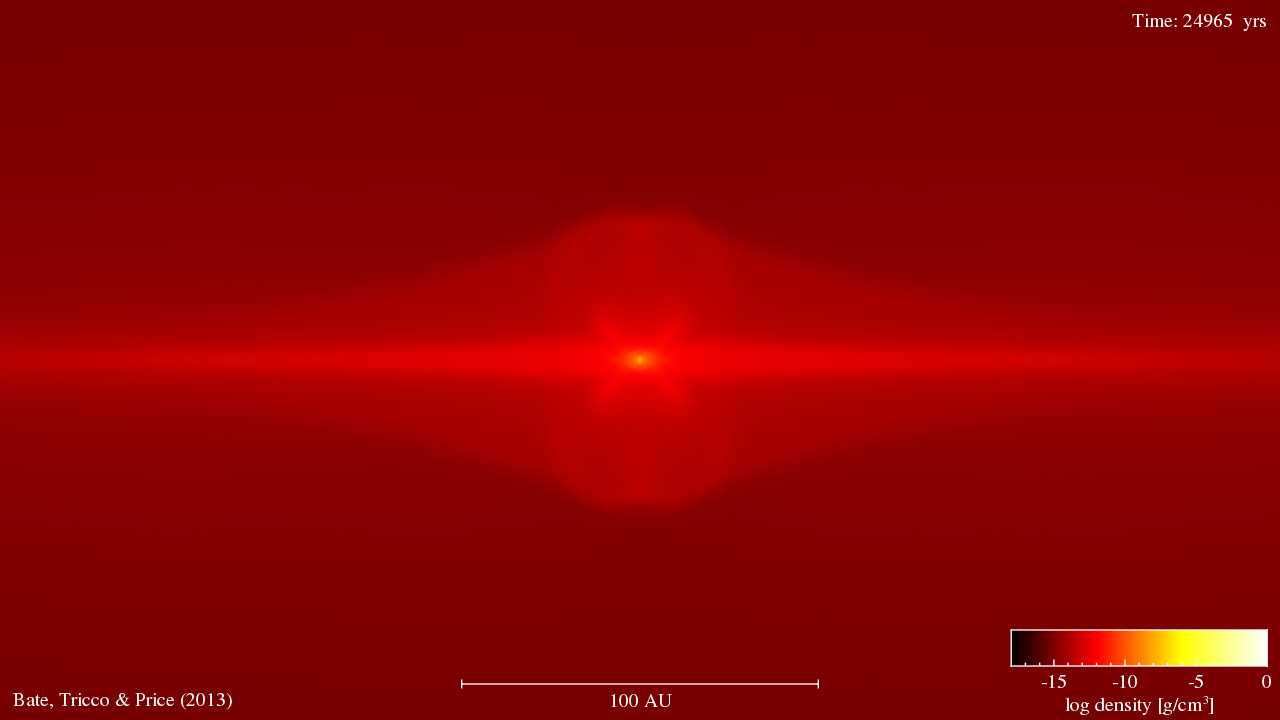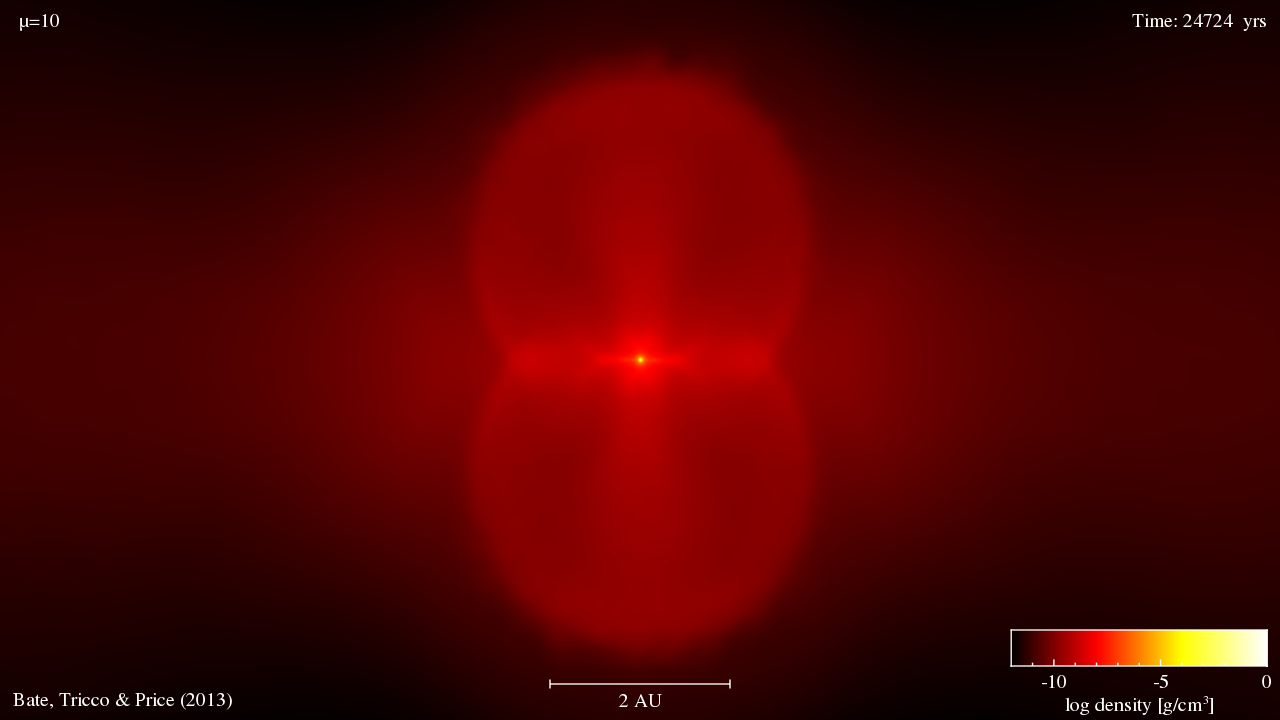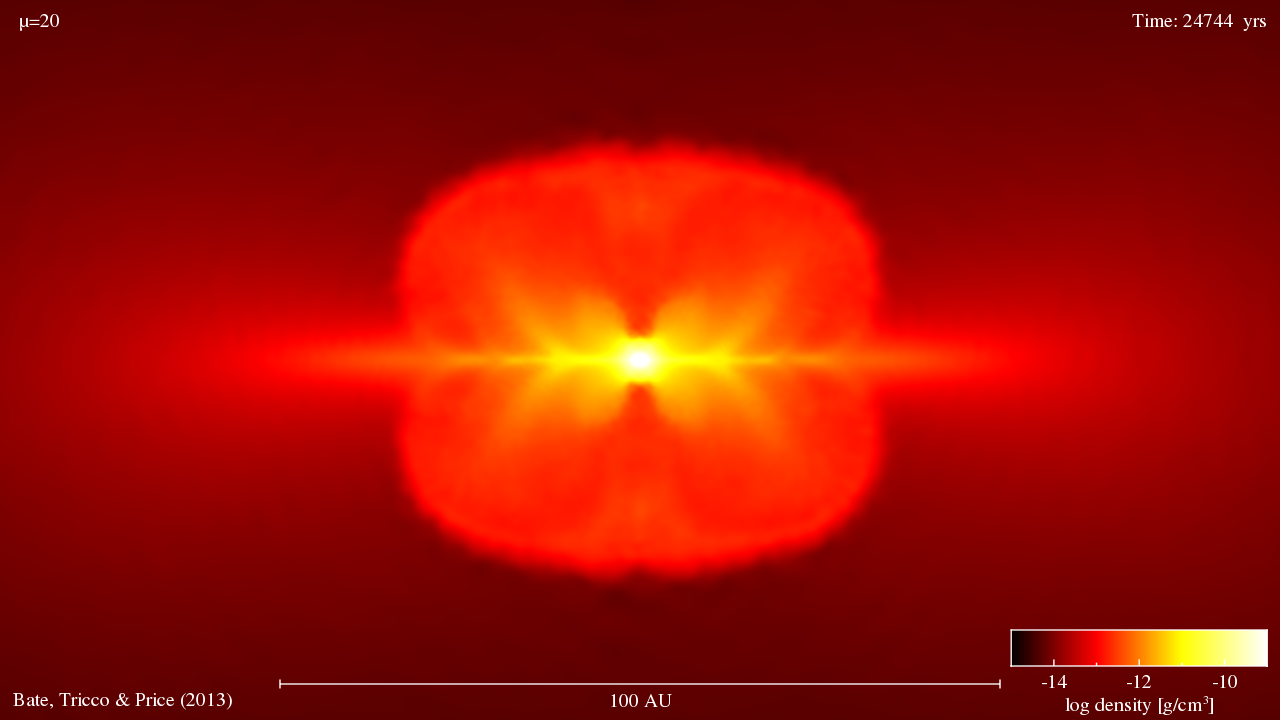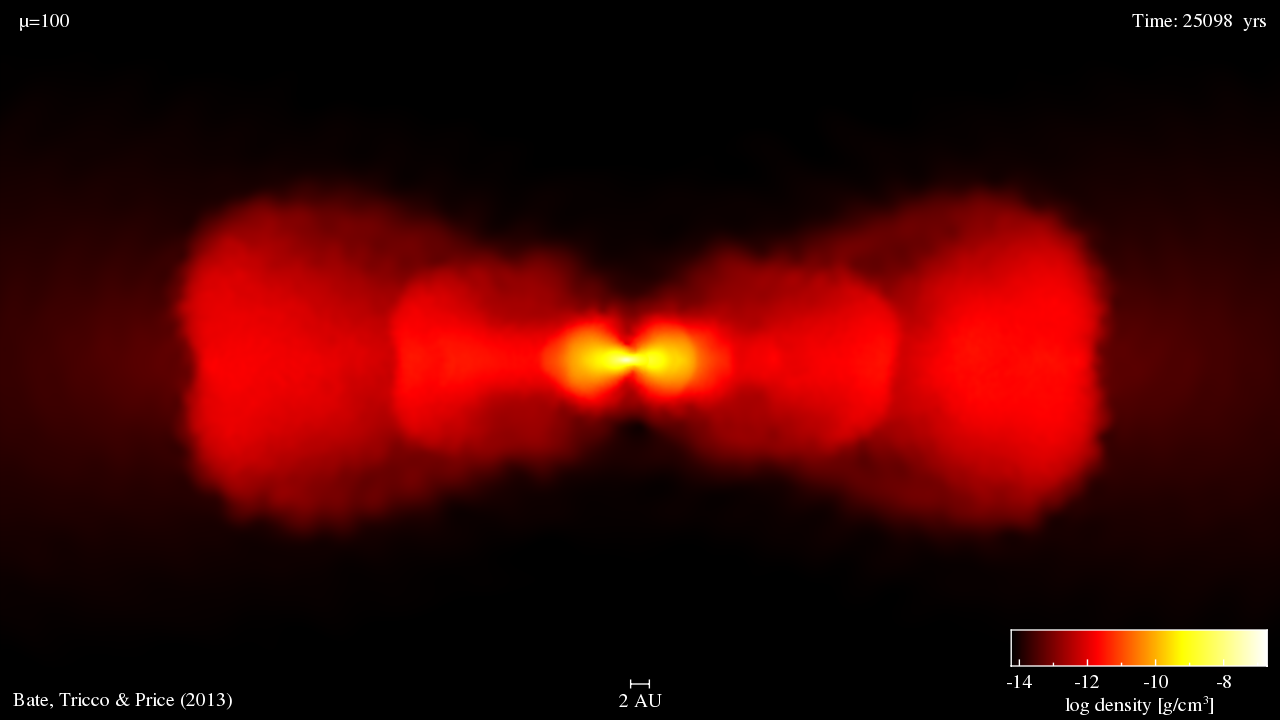Collapse of a molecular cloud core to stellar densities: stellar core and outflow formation in radiation magnetohydrodynamics simulationsMatthew R. Bate, Terrence S. Tricco, and Daniel J. Price We have performed smoothed particle radiation magnetohydrodynamics (SPRMHD) simulations of the collapse of rotating, magnetised molecular cloud cores to form protostars. The calculations follow the formation and evolution of the first hydrostatic core, the collapse to form a stellar core, the launching of outflows from both the first hydrostatic core and stellar cores, and the breakout of the stellar outflow from the remnant of the first core. We investigate the roles of magnetic fields and thermal feedback on the outflow launching process, finding that both magnetic and thermal forces contribute to the launching of the stellar outflow. We also follow the stellar cores until they grow to masses of up to 20 Jupiter-masses, and determine their properties. We find that at this early stage, before fusion begins, the stellar cores have radii of ≈ 3 R⊙ with radial entropy profiles that increase outward (i.e. are convectively stable) and minimum entropies per baryon of s/kB ≈ 14 in their interiors. The structure of the stellar cores is found to be insensitive to variations in the initial magnetic field strength. With reasonably strong initial magnetic fields, accretion on to the stellar cores occurs through inspiralling magnetised pseudo-discs with negligible radiative losses, as opposed to first cores which effectively radiate away the energy liberated in the accretion shocks at their surfaces. We find that magnetic field strengths of >10 kG can be implanted in stellar cores at birth. Refereed Scientific Paper and Dataset
"Collapse of a molecular cloud core to stellar densities: stellar core and outflow formation in radiation magnetohydrodynamics simulations" AnimationsSimulation & visualisation by Matthew Bate and Daniel Price. The movies below were produced using the SPLASH software written by Daniel Price to visualise SPH simulations (Price 2007). Animations of density with different mass-to-flux ratios:In these calculations the initial magnetic field strength is varied from a strong case (mass-to-flux ratio μ=5 times critical) to weaker cases (μ=10, 20, 100). In the strongest field case a flattened pseudo-disc forms in the molecular cloud core. At the centre of the pseudo-disc, the first hydrostatic core is formed. In the cases with weaker magnetic fields, the first hydrostatic core is formed without being surrounded by a pseudo-disc. In all cases with μ>=20, a slow (~2 km/s) magnetically-driven outflow is launched from the first core. Eventually, in each calculation a second collapse occurs within the first core (due to the dissociation of molecular hydrogen) and the stellar core is formed. Again, in the calculations with μ>=20, a second, fast (~10 km/s) outflow is launched from the vicinity of the stellar core and is followed to a distance of ~2 AU before the animation stops. Copyright: The material on this page is the property of Matthew Bate, Terrence Tricco and Daniel Price. Movies and images are released under a Creative Commons Attribution-Noncommercial-Share Alike 3.0 License. Technical DetailsThe calculations model the collapse of rotating, uniform-density, cold 1 solar mass molecular cloud cores that are 2700 AU in radius and are in pressure equilibrium with a warmer, low-density external medium. The free-fall time of the clouds is 24,000 years. The clouds rotate such that they have ratios of rotational energy to the magnitude of the gravitational potential energy of beta = 0.005. The calculations are performed with five different initial magnetic field strengths, corresponding to initial mass-to-flux ratios of infinity (i.e. no magnetic field), 100, 20, 10, and 5 times the critical value. The calculations resolve more than 7 orders of magnitude in length scale and 17 orders of magnitude in density. The calculations were performed using a parallel three-dimensional smoothed particle hydrodynamics (SPH) code using 3 million particles to model each solar-mass core on the DiRAC Complexity Cluster. Copyright: Matthew Bate, University of Exeter.
|




